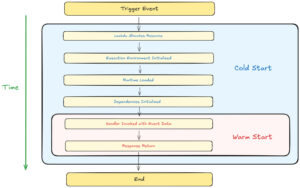What is Online to Offline (O2O) Commerce? | Unlock case studies
20/05/2024
643
Table of Contents
Hi our tech fellows, this is SupremeTech’s blog series about retail and commerce. You may ask why a tech company like us writes about such irrelevant topics. Actually it’s opposite. About 50% of our tech solutions serve clients in retail industry. The increasing demand of customers for a more convenient buying journey encourages corporations to digitalize their traditional operations system. In order to solve this puzzle with optimal technology solutions, understanding the latest business movements is a must for our technical team. In this article, we’re gonna go through the topic of Online to Offline Commerce for retail industry (aka O2O Commerce).
Actually we wrote about O2O Commerce once before. You may find it interesting if you think O2O is the trend enterprises cannot miss too.

What is Online to Offline Commerce?
Online-to-offline (O2O) commerce refers to a business strategy that draws potential customers from online channels to make purchases in physical stores. This model integrates the digital and physical shopping experiences. By leveraging the strengths of both platforms, the ultimate purpose is to enhance consumer engagement and drive sales.
O2O Commerce has become commonplace over the past few years. You probably have experienced the benefits of this model with some global brands like Starbucks, Walmart, Nike, Apple, Sephora, etc.
Benefits of Online to Offline Commerce
Enhanced Customer Experience
First of all, online shopping saves a whole lot of time, especially the time wasted to wait for order fulfillment. Imagine picking up your favorite cup of coffee on the way to work takes only a minute or two. While queuing in line at the store costs at least 15 precious minutes of your morning. Let’s count the total time you spend for traditional coffee ordering and you will be surprised by how much time is saved since the introduction of online order.
Increased Sales Opportunities
Not only customers but retail outlets themselves also unlock the same benefits. That customers migrate to online order lifts the burden of operations off physical store. For example, with the same amount of staff, one store can proceed more orders if they don’t have to allocate resources taking order or processing payment for each customer directly.
Moreover, retailers can capture additional sales by reaching customers who start their purchase journey online but prefer to complete it in-store.
Better Customer Data
That the whole order and payment process takes place online allows business owners to keep track of customer’s behavior and preferences. Then, strategy planners are able to customize marketing campaigns, promotions and other customer service initiatives. Data-based decision making mitigates the negative consequences caused by biased assumptions.
Reduced Return Rates
When customers pick up online orders in-store, they have the opportunity to check the product immediately, reducing the likelihood of returns.
Examples of Online to Offline Commerce
Starbucks
- Mobile Ordering: Starbucks’ mobile app allows customers to place their orders online and pay in advance. This functionality reduces wait times and enhances convenience.
- Personalization: The app offers personalized recommendations based on previous purchases, increasing customer engagement and loyalty.
- Rewards Program: The Starbucks Rewards program is integrated with the mobile app, encouraging repeat visits by offering points for every purchase, which can be redeemed for free items.
Walmart
- Click-and-Collect Service: Walmart offers a robust click-and-collect service where customers can order groceries and products online and pick them up at a local store. This service caters to customers who prefer online shopping but want to avoid shipping fees or delivery wait times.
- Mobile App Integration: Walmart’s app allows customers to browse products, create shopping lists, and place orders for pickup, making the shopping experience seamless.
- In-Store Experience: The in-store pickup process is streamlined with dedicated pickup areas and even curbside service, where store employees bring the orders to customers’ cars.
Sephora
- Sephora App: The app offers features like Virtual Artist, allowing customers to try on makeup virtually using augmented reality. Users can also browse products, read reviews, and make purchases directly from the app.
- In-Store Experience: Sephora’s stores are equipped with digital tools like Color IQ and Skincare IQ. They help customers find the perfect product matches. These tools create a seamless integration between online data and in-store experience.
- Omnichannel Rewards Program: The Beauty Insider program integrates online and offline purchases. Customers earn and redeem points through any shopping channel, encouraging loyalty and repeat visits.
Online to Offline Commerce from the technical perspectives
Online to Offline commerce for retail industry involves both digital and physical technologies to create not only seamless buying journey for customers but also smooth operations for admin team. There are a bunch of components worth considered for a retail company when implementing O2O Commerce. Whichever option chosen depends on the scale and strategy of a particular business.
Within this article, we will go through the most common types of technical request we received from clients:
Mobile and Web Applications
Responsive Design: Developing mobile and web applications that provide a consistent user experience across different devices and platforms.
Augmented Reality (AR): Implementing AR features, such as virtual try-ons or in-store navigation, to enhance the shopping experience.
Payment Systems
Omnichannel Payment Solutions: Offering seamless payment options that work both online and offline, such as mobile wallets, contactless payments, and integrated point-of-sale (POS) systems.
Integration with Payment or Point Gateways: Sometimes transactions are processed by third-party gateways. As a result, there’s an increasing demand for payment and point gateway integration.
Data Integration and APIs
API Management: Using APIs to enable communication and data exchange between different systems, such as e-commerce platforms, CRM systems, and POS systems.
Middleware Solutions: Implementing middleware to facilitate integration between disparate systems, ensuring seamless data flow and operational efficiency.
Personalization Engines
Recommendation Systems: Leveraging machine learning algorithms to provide personalized product recommendations based on customers’ browsing and purchase history.
Dynamic Pricing: Implementing dynamic pricing strategies that adjust prices in real-time based on demand, competition, and other factors.
From a technical perspective, O2O commerce is a complex but highly rewarding strategy that requires the integration of multiple technologies and systems.
Is Online to Offline Commerce for retail industry a must for all businesses?
It depends, of course, on the nature of the business and the particular products on sale. There are other factors like the scale of the business, target market, and competitive landscape. Furthermore, O2O commerce is not a one-size-fits-all solution. For many, a hybrid approach that gradually integrates O2O elements as the business grows and market conditions evolve can be a pragmatic way to leverage the benefits of both online and offline channels.
Technical capability is another deciding factor. Operating O2O commerce requires at least a team of tech people to handle system maintenance and troubleshooting. If the business is in early stage with small budget, looking for low-code solutions or outsourcing seems to be a more efficient approach.
Thanks for reading us. See you in the next articles.
Related Blog





















